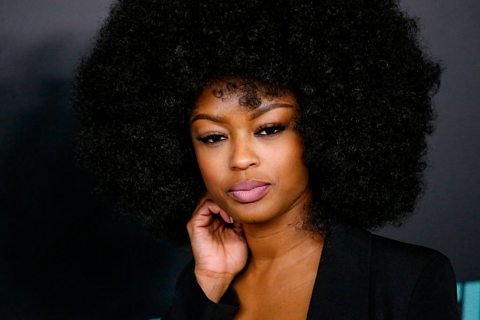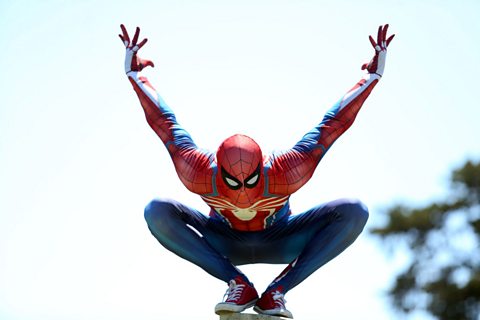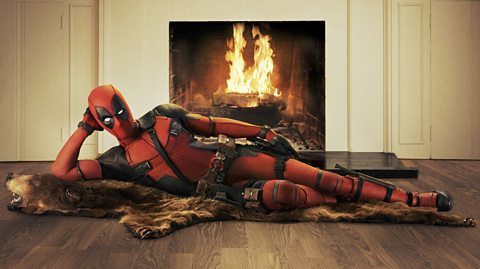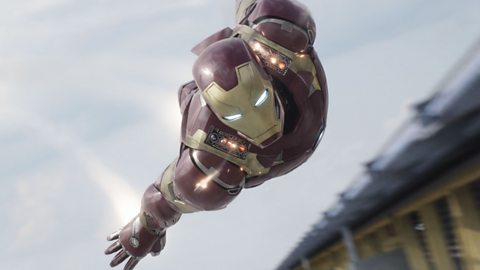Is it a bird? Is it a plane? No, it’s a superhero you’ve seen a million times before.
From Superman to Captain America, sometimes it can feel like the superheroes we’re used to seeing on the big screen are a bit… similar.
In recent years, big industry names like Marvel and DC have worked hard to bring more diversity to superhero universes. Marvel had enormous success with Black Panther and their upcoming Ms Marvel show will feature a Muslim superhero, Kamala Khan. But there are also lesser-known, alternative superheroes out there, with a range of identities, values and traditions .
We’ve spoken to three people who know their stuff, to give you a hand spotting some of them and what sets them apart from other fighters.
Know where you’ve come from: Indigenous Superheroes
Raise your hand if the word superhero makes you think of masks, costumes and quick identity switches in a phone booth.
But for Indigenous/BLAK (a term used by some Aboriginal people to describe their identity) superheroes, there often isn’t an alter ego to hide behind.
Cienan Muir, the Yorta Yorta/Ngarrindjeri (two Australian Aboriginal nations) director of Indigenous Comic Con (Australia), believes this symbolises the long fight for Aboriginal civil rights by Indigenous Elders.
“This was done, not behind any sort of mask, no deceptive agenda, no alternative way forward, no safety to fall back on. Just their true self.
“This can be translated over to the comic book world, in many cases with BLAK/Indigenous heroes faces not being obstructed by anything.” They are often depicted without the usual superhero mask.
 Image source, Cienan Muir
Image source, Cienan MuirIt’s not unusual for the unique powers of many Western superheroes to be portrayed as the next step in human evolution. Think of the X-Men and their mutations.
Indigenous superheroes can be a little different.
A huge part of many Indigenous cultures is having respect for the Elders, their wisdom and knowledge of the past.
Cienan sums this by saying “You don’t know where you’re going until you know where you’ve come from.”
There are a number of Indigenous superheroes in mainstream comics, such as Forge, Shaman and the siblings Bishop and Shard (X-Men), American Eagle (Marvel) and Dark Ranger (Batman).
But Cienan believes characters created by non-Indigenous writers can lead to misconceptions: “Just about every Aboriginal character in mainstream comics have one way or another, been created with some stereotypical trope, whether it be their name, their powers, even some form of cultural appropriation through traditional items worn by the hero.”
For Cienan, “representation done right, includes having a creative team with people from that culture… creating a more diverse world of comics.”
One groundbreaking Indigenous superhero TV series and comic book is Cleverman, whose superhero’s real name is Koen West. The creator Ryan Griffen, who is Aboriginal, has spoken about how important it was to respect protocols and the stories passed on by the Elders.
Stepping from the shadows: LGBTQ+ Superheroes
There has been a strong LGBTQ+ presence behind the scenes of comics for decades.
Christian Cooper made history in the early 1990s as Marvel’s first openly gay writer and editor. Whilst there, he created Marvel’s first openly lesbian character, Victoria Montesi, and introduced the first LGBTQ+ character to the Star Trek franchise, Yoshi Mishima.
However, it has taken years for leading LGBTQ+ characters to appear on screen, such as Marvel’s Valkyrie and DC Comic’s Batwoman.
 Image source, KENA BETANCUR
Image source, KENA BETANCURLGBTQ+ comic writer Joe Glass believes it’s been traditionally hard for independent publishers to compete to compete in the comic market - going up against the likes of Batman and Captain America is no easy feat:
“For marginalised voices, who traditionally find it difficult to get gigs at the likes of Marvel/DC, this means they also tend to steer clear of superheroes when pitching. However, this is starting to change; both in terms of the Big Two hiring more marginalised voices, and more independent superhero stories starting to come to the fore.”
Joe believes that change has come from readers wanting to see new perspectives.
“Queer readers are loving the chance to actually see themselves in the role of hero and not just sidekick/best friend or, worse, victim.”
Joe recommends the independent comic Sereno, whose eponymous lead is queer.
If you prefer to watch superheroes, the 2018 Netflix show She-Ra and the Princesses of Power (a reboot of a 1985 film by Filmation) not only features a lesbian relationship between two main characters, but also characters with other sexual and gender identities.
A common trope within superhero comics is hidden identity. Superheroes will often keep their powers and activities a secret from their loved ones and the wider public, typically for safety or to avoid unwanted interest.
 Image source, Anadolu Agency
Image source, Anadolu AgencyOne of Joe's’ upcoming projects focuses specifically on the idea of the closet and how it can be combined with the superhero metaphor.
He says: “When reading superhero books when growing up and being a gay teen myself, it was something very much at the forefront of my mind.
I could relate to that idea of “wearing a mask” and having to portray a different self as a form of protection.
I think that’s something a lot of people can still relate to today, and is partly why superheroes are still so popular with the LGBTQ+ community.”
Finding your personal inner strength: Anime superheroes
Anime has a variety of superhero genres, like tokusatsu which makes heavy use of special effects, and super sentai which is a fighting team. According to Leah Holmes, a PHD student studying anime fandom in the UK, the driving force of anime superheroes, is “fairly universal – protect the innocent and fight off the bad guys.”
However there are some things that set anime superheroes apart from Western ones. East Asian cultural traditions and social norms are often woven into them:
“A really simple example is in the Dragonball series, which is heavily influenced by the 16th Century Chinese novel Journey to the West.”
 Image source, The Asahi Shimbun
Image source, The Asahi ShimbunAlso, having a power isn't enough to make you a superhero. While it's still a necessary component, quite often in anime universes pretty much the entire population will have some sort of power.
So what's the difference? Leah says that it's the will to use your powers for the good of the community: “This can be extrapolated heavily from Magical Girl titles, where an ordinary girl is charged with fighting off enemies for the good of their town/planet, even if they are afraid or don't want to… It’s something of a metaphor for the transition into adulthood.”
Whilst these themes help to set anime apart from Western superheroes, these will sometimes – consciously – pop up in Japanese stories too. In popular superhero high school anime My Hero Academia, main character Deku aims to follow in the footsteps of the number one hero, All Might. A huge figure adorned in blue, red and yellow, and with a slightly deranged face cast in shadow, some have theorised that All Might is meant to provide a commentary on the ideals of Western (and, more specifically, American) superheroes.
Even in the titles influenced by archetypal American heroes, there are still unique themes that are distinct to anime. The overarching one in all anime superhero titles is “personal inner strength”, according to Leah.
“Deku has no powers at the beginning of My Hero Academia, but he strives to become like his hero, All Might, so he can inspire people in the same way, and he gets there through perseverance and hard work.
“While these are not necessarily inherently Japanese traits, I do think the motivation behind them is more heavily grounded in societal expectations than tends to be the case for Western superheroes.”
 Image source, The Asahi Shimbun
Image source, The Asahi ShimbunFour LGBTQ+ superheroes you need to know about
We take a look at some of the superheroes who are part of the LGBTQ+ community.

The science of superheroes
How scientifically possible are your favourite superhero's powers?

The LGBT icons you need to know about
They took a stand in an attempt to bring about change.
